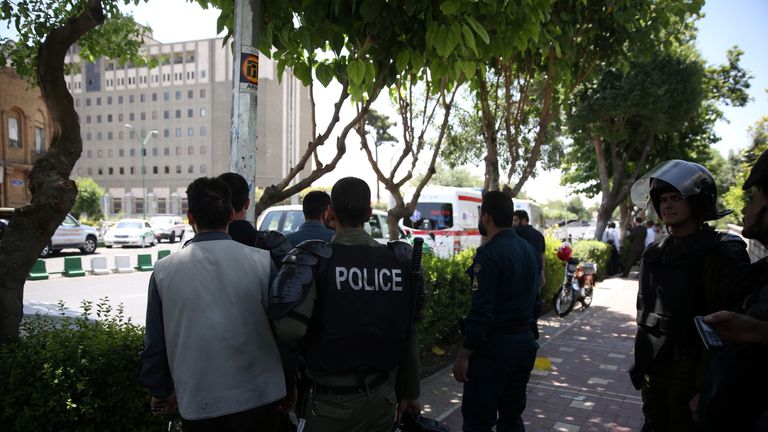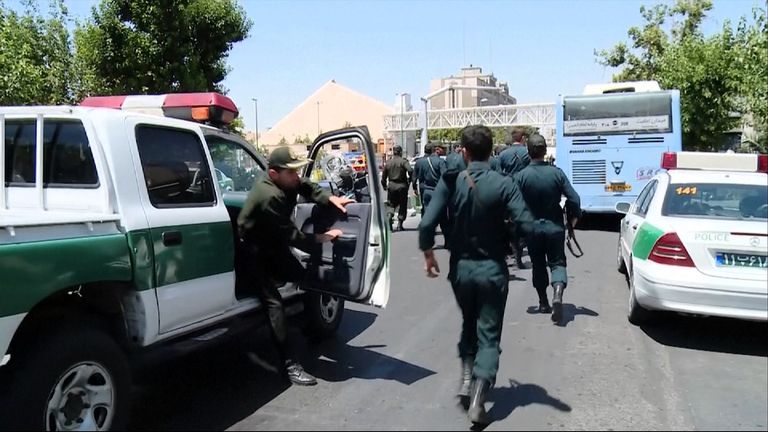Islamic State is plotting to spread terror into the streets of Iran
Following the attacks in Iran, Sky's Sam Kiley says the so-called caliphate is using methods there similar to attacks in Europe.
Wednesday 7 June 2017 15:09, UK
When the so-called Islamic State says it has been behind terror attacks, the tardy and often inaccurate boasts can, and should be, swallowed only with a bucket of salt.
But when it comes to , the death cult's claim to have penetrated the Iranian parliament and bombed the city's most important political shrine can be taken for what it is - the fulfilment of a much promised threat.
Terrorists were still shooting and holding hostages inside when the so-called caliphate's news agencies began to say that it was behind the suicide bombings at the mausoleum of Ayatollah Ruhollah Khomeini, the founder of modern revolutionary Iran.
If there is a section of humanity that the so-called IS hates more, even, than the democratic West it is the Shi'a theocracy in Iran that is funding, training, advising and fighting alongside militias in Iraq and Syria's armed forces.
The cult launched itself as the world's most atrocious terror group with the massacres of Shi'a recruits and other young men it captured at an Iraq military base in June 2014.
It pioneered the snuff movies that have become its cultural hallmark with the mass murder and individual slaughter of Shi'a captured in Iraq and Syria, calling its victims "Safavids" after the Persian era that dominated the Middle East 950 years ago.
Damascus and Baghdad are seen as satraps of Tehran.
Much, perhaps most, of the inspiration behind the evolution of the so-called caliphate was to declare a Sunni theocracy to rival "Persian" ambitions in the region - an attempt to block the sweep of a Shi'a crescent from Iran to southern Lebanon.
This time last year, Iran's intelligence services said they had foiled a plot to carry out multiple bombings in the Iranian capital during Ramadan.
This year it would appear to have failed to stop IS getting its terrorists into the very heart of power - even taking hostages.
In March, IS released a Persian language video showing its followers beheading Shi'a militiamen in Syria, and called on Iran's Sunni minority of mostly ethnic Arabs living along the Iranian border to rise against the Tehran government.
It has also published its main magazine, Rumiyah, in Persian.
It's thought that perhaps over 1,000 Iranian Sunnis joined IS - and now the cult is able to show what it claims is video from inside the Iranian parliament building during the attack itself.
IS is under heavy pressure. The 'caliphate' once straddled Syria and Iraq and absorbed almost half of both countries.
Now it has been broken into pieces in Iraq and its capital is under attack by Kurd-dominated forces on the ground and the international coalition in the air above.
Just as with its exhortations to its followers and groupies in the West to hit back with low-tech weapons and bombings, so too it has been plotting to spread terror into the streets of Iran, where local officials have long boasted that it would find operating much more difficult because of the deep penetration of society by the security forces and secret police.
Not a boast that can be made anymore.






